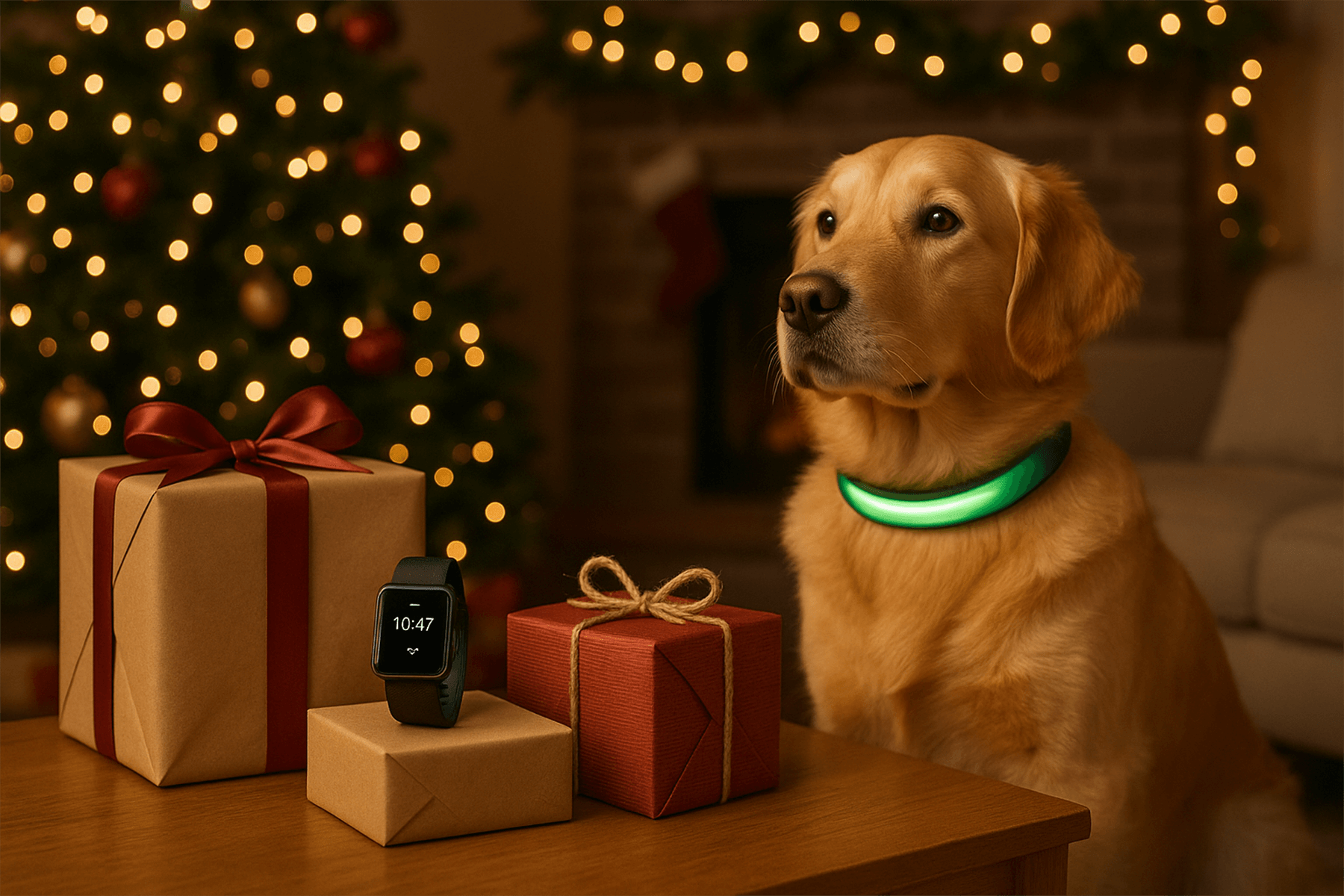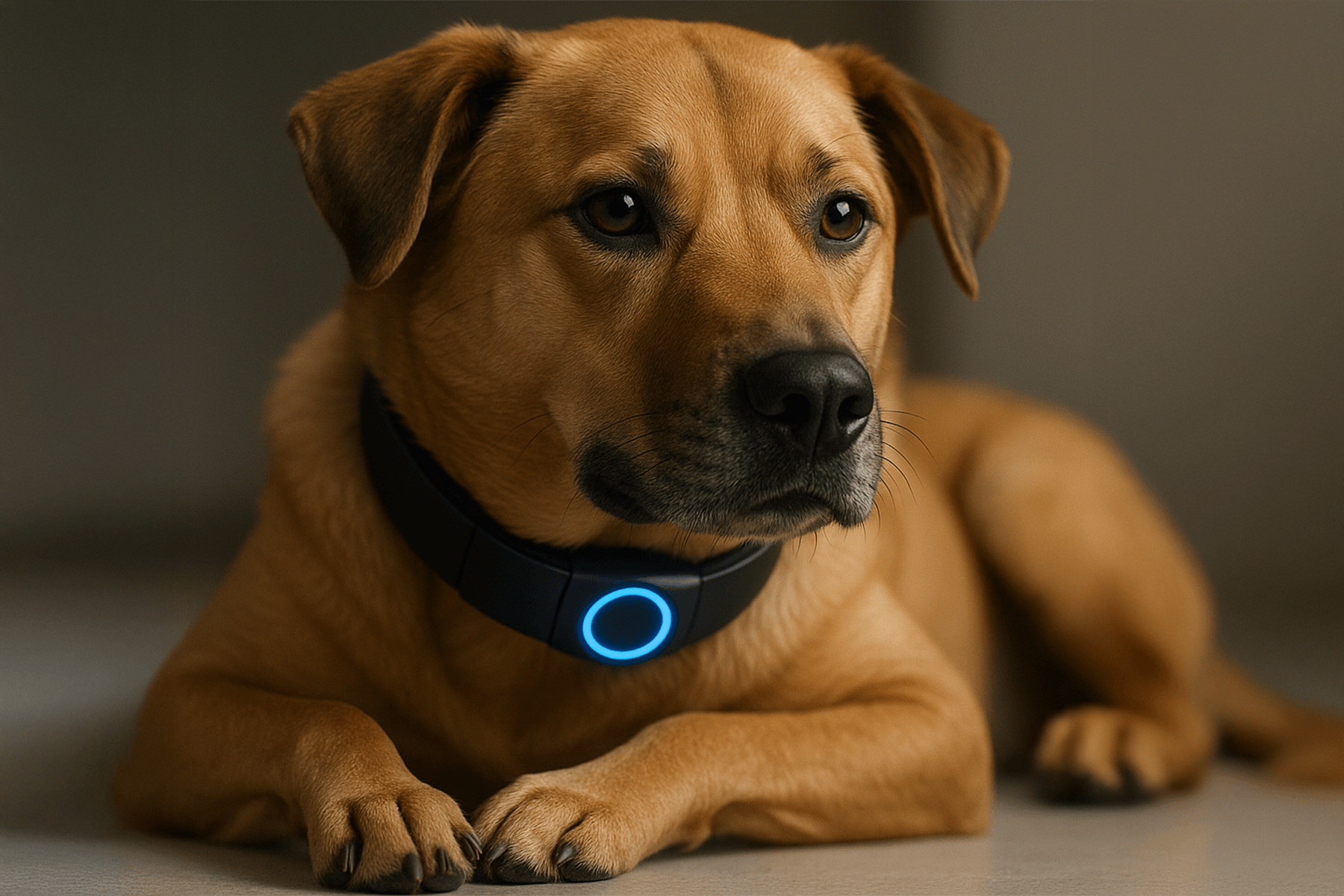At CES 2025, some of the most talked-about devices weren’t for humans at all. Smart collars and sensors designed for pets are redefining how we care for animals. These “pet wearable AI” devices go beyond location tracking to interpret movement, sleep, and behavior—turning raw data into useful insight for owners.
Why Pet Tech Is Having Its Moment
Pet care is shifting from reaction to prevention. Miniaturized sensors, improved battery life, and AI models trained on thousands of activity patterns now make it possible to understand subtle changes in your pet’s health and mood. The goal isn’t to replace vets but to give owners early clues before problems escalate.
As CRN reported from CES 2025, “SATELLAI revealed a novel take on location- and activity-tracking for dogs with satellite-connected wearables.” The mix of GPS, sensors, and AI shows how the “smart pet collar 2025” category is maturing fast.
How AI Turns Movement Into Meaning
Modern AI collars measure activity, rest, and sometimes heart and breathing patterns. They use this data to detect changes over time—helpful when your pet can’t tell you something feels off. For example:
- Less play or shorter walks may point to joint pain or fatigue.
- Interrupted sleep or pacing could signal anxiety or discomfort.
- Excessive scratching might suggest skin irritation or allergies.
These alerts aren’t diagnoses—they’re early signals that help you decide when to rest, hydrate, or call your vet. Used consistently, they create a digital journal of your pet’s health that can complement regular checkups.
Real Devices You Can Explore
Several companies are building on this idea:
- Whistle tracks activity, diet, and licking or scratching habits, sending behavior summaries to owners.
- FitBark helps monitor sleep quality and recovery—useful for senior dogs or pets in rehabilitation.
- Tractive combines GPS location with wellness scoring, a good fit for dogs that roam.
- Halo Collar adds training and boundary alerts for safety in open areas.
And for remote adventurers, satellite-linked trackers such as those from SATELLAI extend coverage far beyond cellular networks. These devices give owners confidence their pets are safe even off the grid.
What’s in It for You—and Your Pet
For owners, the biggest benefit is peace of mind. Instead of guessing how your pet feels, you get trends and context. Daily summaries can show whether your dog is sleeping enough, recovering well after exercise, or experiencing unusual stress. Over time, that data can reveal small shifts before they become serious issues.
For pets, the benefit is more comfort and earlier care. If a collar detects less movement over several days, that might prompt a vet visit that catches joint inflammation early. It’s a smarter version of “knowing your pet,” supported by data instead of guesswork.
What to Consider Before Buying
- Features: Focus on insights, not gimmicks. Look for clear graphs, behavior alerts, and simple explanations.
- Battery & durability: Collars should last several days and be waterproof enough for everyday play.
- App design: The best dashboards summarize trends at a glance rather than overwhelm with numbers.
- Privacy: Review how your pet’s data is stored and shared. Transparency matters.
- Cost: Many devices require subscriptions for advanced insights or GPS history. Read the fine print before buying.
For reliable health context, pair wearable data with guidance from sources like the Cornell University College of Veterinary Medicine and your local veterinarian.
What This Technology Can’t Do (Yet)
AI collars can’t diagnose or replace professional evaluation. They may miss short-term changes or misinterpret data. A false alarm is always possible. Think of these tools as companions to—not substitutes for—experienced human care. The best use is to notice patterns earlier and discuss them with your vet.
Key Takeaways
- AI pet wearables now track health, rest, and mood—not just location.
- Data helps owners spot early signs of discomfort or stress.
- Smart collars offer peace of mind but work best alongside regular veterinary care.
What This Means for You
Smart collars are giving pet owners a clearer view of their companions’ lives. For busy people, that can mean catching small health changes that might otherwise go unnoticed. For pets, it can mean earlier comfort, fewer surprises, and more attentive care. The technology isn’t perfect—but it’s a meaningful step toward understanding the animals we love through better data, not guesswork.



